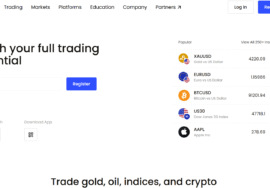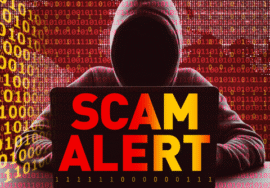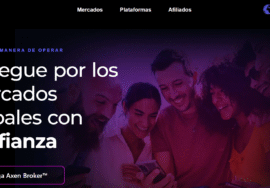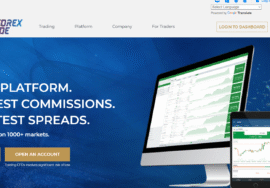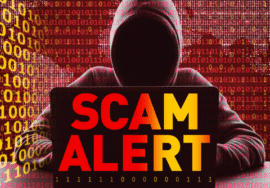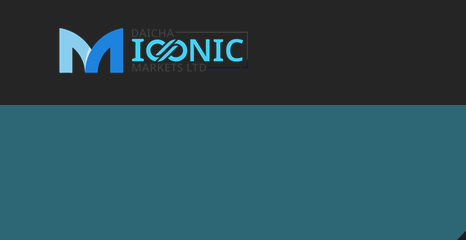
MabiconTrade.com — 7 Reasons You Should Stay Far Away
MabiconTrade.com — 7 Reasons You Should Stay Far Away
Introduction
MabiconTrade.com markets itself as a modern FX & crypto broker, but independent checks, regulator alerts, and user reports point to a very different reality. Below are seven numbered, evidence-based reasons to be extremely cautious before interacting with MabiconTrade. I’ve cited the most important sources so you can check them yourself.
1) Official regulator warning (ASIC / Investor Alert)
Australia’s consumer/investor alert lists and broker-watch sites show Mabicon Trade on official watchlists. ASIC (via Australia’s investor alert pages cited by BrokersView) has treated the brand as potentially offering financial services without proper authorization — a red flag that investors in Australia (and elsewhere) lose the protections normally supplied by regulators.
2) Classified as unregulated / labelled risky by watchdogs
Broker-aggregators and safety reviewers have analyzed MabiconTrade and concluded it is unregulated and high-risk. BrokersView’s profile summarizes the regulator alert and explicitly classifies the operation as unregulated and “appears to be a scam.” Independent review sites (TheSafetyReviewer, WikiFX) echo the same concerns. That convergence of independent watchdogs increases the credibility of the warning.
3) Domain is young and ownership is hidden
MabiconTrade’s domain is recent and WHOIS/ownership details are privacy-masked. New domains plus private registration are commonly used by scam operations to make tracing and enforcement difficult. Lack of corporate transparency removes a key avenue for accountability if funds go missing.
4) Consistent user complaints — withdrawal problems and recovery pressure
Trustpilot and community posts show users reporting withdrawal delays or needing outside “recovery” services — often after being told to pay extra fees (processing, unlock, or “recovery commission” charges). These patterns are typical of crypto withdrawal manipulation and processing fee scam playbooks: allow deposits, then block withdrawals until victims pay more. Trustpilot shows overwhelmingly negative, recent reviews.
5) Social / community corroboration (videos, forums)
YouTube reviews, Facebook groups and forum threads document similar stories: people posting screenshots of chats, bank/payments flows, and requests for extra payments. While community material varies in quality, the aggregated pattern — regulator alert + watchdog flags + user complaints — forms a consistent picture. Use community reports as supporting evidence, not the only proof.
6) Classic scam signals present (fake credentials, false claims)
Independent reviewers note the site makes bold claims about “institutional” credentials or trading performance but provides no verifiable license numbers or audited performance histories. False or unverifiable credentials are classic signs of an unauthorized trading platform or clone. Always insist on registry checks (FCA, ASIC, CySEC, NFA) before trusting any broker.
7) Recovery is costly and uncertain — beware recovery commission fee traps
Victims often report being approached by “recovery firms” after being unable to withdraw funds. Those firms frequently ask for an upfront recovery commission fee or promise success in exchange for payment — a second layer of scam that preys on victims. If you’re contacted after a loss, verify the recovery firm independently and be extremely cautious about paying anyone up-front.
How to Protect Yourself — quick checklist
- Check official regulator registers (ASIC, FCA, CySEC) before depositing.
- Don’t pay surprise fees: legitimate brokers don’t demand processing/unlock fees to release your money.
- Avoid firms with private WHOIS and no audited history.
- If you’ve lost money, document everything and contact your bank/card issuer immediately for chargeback help.
- Report the site to your local regulator and to international scam trackers.
Conclusion — Why MabiconTrade.com Is High-Risk
MabiconTrade.com exhibits the core characteristics of a modern online trading scam: a recent and anonymized domain, false or unverifiable regulatory claims, watchdog and regulator warnings, and a pattern of user complaints centered on blocked withdrawals and demands for extra payments. When those elements line up, the safest assumption for an investor is that the platform operates without the legal and financial safeguards that legitimate brokers provide.
Regulatory protection matters because it creates enforceable standards and recourse pathways. A licensed broker must keep client funds segregated, maintain minimum capital levels, and submit to audits or supervisory oversight. When a platform is unregulated — or falsely claims regulation — those protections evaporate. That’s why the ASIC investor alert (and BrokersView’s echo of it) is such a heavy indicator: regulators don’t publish warnings lightly. Being on an investor alert list means the authorities have either seen repeat complaints or have
evidence that the entity is operating outside a required licensing framework. That’s not a minor issue; it’s a structural failure from the perspective of consumer safety
Another crucial point is the pattern around withdrawals. Reports on Trustpilot and community forums describe a common script: early deposits are accepted and accounts sometimes show “paper gains,” but when a client requests withdrawal the process stalls. Operators may cite KYC issues, demand additional “processing” or “gas” payments, or refer users to external “recovery” teams that ask for a recovery commission fee. Every legitimate, regulated broker follows transparent withdrawal processes and publishes clear fee schedules. That MabiconTrade’s complaints consistently mention extra fees is textbook processing fee scam behavior — where paying more only deepens the victim’s exposure.
Community corroboration — YouTube videos, Facebook threads, Medium posts and safety reviewers — compounds the concern. Independent reviewers such as TheSafetyReviewer and WikiFX flag the site for lack of registration and poor transparency. These services use automated checks (domain age, server location, WHOIS privacy) plus manual verification (regulator databases, user feedback). When they converge with regulator alerts and user testimony, the cumulative evidence becomes compelling. It’s not a single bad review; it’s a multi-vector alarm.
Finally, the recovery picture is bleak. Law enforcement and regulators can pursue cross-border fraud, but these processes are slow, expensive, and often yield limited recoveries. That’s why prevention — checking licensing, avoiding private-WHOIS sites, and steering clear of platforms that demand surprise fees — is the most effective strategy. If you or someone you know has funds tied up with MabiconTrade, act quickly: stop further payments, gather all communication and transaction records, immediately contact your bank or card issuer to request a reversal or suspicious charge review, and file complaints with local regulators and consumer protection agencies. Consider contacting a reputable, regulated legal recovery service only after independently verifying their credentials.
Bottom line: MabiconTrade.com stacks up as a high-risk, likely fraudulent operation. Multiple independent watchdogs, an official investor alert, user complaints about withdrawal blocks and surprise fees, and a lack of verifiable licensing all point toward an unauthorized trading platform employing crypto withdrawal manipulation and processing fee scam tactics. Avoid engaging, and if you’ve already sent money—document everything and seek immediate help from payment providers and regulators.


